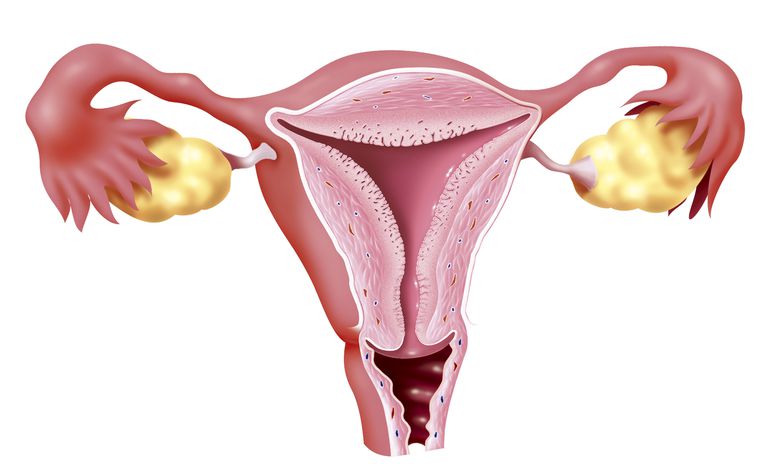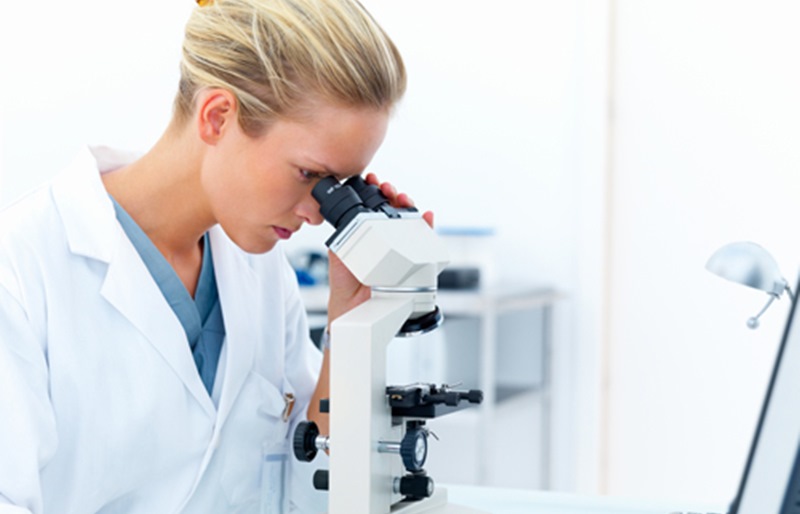In the article, we will consider why the cervix hurts. What caused this unpleasant symptom worries many women. In order to prevent pain in the cervix, a woman must know its structure and structure. This will save many problems and will help to understand the causes of such an unpleasant pathology.
Structure
The cervix is the lower part of the organ, that is, the transition zone from the vagina to the uterus. Its shape resembles a cone or cylinder after childbirth in girls and nulliparous women. Size is influenced by several factors. The norm is a length of about 3-4 cm, width 2.5 cm. In a pregnant woman, the neck is shortened before childbirth and softens, that is, it becomes the birth canal for the baby.

Neck parts
There are 2 parts of the cervical spine:
- lower, located in the vagina (vaginal part);
- the upper one is located above the vagina (supravaginal part).
The cervical canal passes inside the neck. At its edges are the pharynx - the inner one, which leads into the uterine cavity, as well as the outer one, it opens into the vagina. The cervical canal fills the mucus. It is produced by the glands after the completion of menstruation, this is a kind of natural protective barrier for the uterus from the effects of pathogenic microflora. The external pharynx is a transition zone, which is considered the most vulnerable part in the neck. This pharynx is exposed to various risks that can provoke the formation of malignant tumors.
The main function of the cervix is reproductive, so painful sensations in this area should alert a woman planning a pregnancy. This is a serious reason for an urgent appeal to a doctor.
Cycle phases
The structure, size and location of the organ is affected by the phase of the menstruation cycle:
- The beginning of the cycle - the neck is lowered and firm, with a dense structure.
- The middle of the cycle is ovulation. The neck acquires a loose structure, softens. The mucus becomes more liquid, in consistency it resembles a chicken egg protein. Then she leaves the cervix for the unhindered passage of sperm. There is an opening of the lower pharynx, as a result of the neck rises above. This is the most favorable period for conception, and the organs are thus prepared for this.
- The cervical region descends before the onset of menstruation. A similar condition can be observed during pregnancy in the early stages.
- During menstruation, the cervical canal expands so that blood clots exit through it.
Can the cervix hurt, it is interesting to many patients. This is a signal for a woman about a possible pathology. The reasons why it occurs can be very diverse.
Painful sensations can be pathological or physiological, but only a gynecologist can conduct differential diagnosis and identify their origin.
In their manifestation, pain also varies.

Pathological pain
So, the unpleasant sensations that are caused by the disease:
- Endocervicitis and cervicitis, an inflammation of the cervical canal and, in general, the cervix, led to chronic pain.
- Sharp pain during intercourse is often caused by erosion, dysplasia, or cervical cancer.
- Endometritis, salpingitis, oophoritis provoke prolonged pain.
- Myomas, polyps and cysts - benign neoplasms of the neck lead to aching pain with low intensity.
How else does the cervix hurt?
Physiological pain
There is a physiological nature of the pain:
- With menstruation.
- After surgery during healing.
The cause of the disease will become clear only by the results of a thorough examination in a antenatal clinic or medical center. Perhaps a hidden asymptomatic course of the disease at the initial stage. Pain in the neck can be its extreme manifestation.
So, why does the cervix often hurt?

Possible pathologies that are most common
We list the diseases in which the cervix often hurts in women. This may include:
- Erythroplakia. It is the degree of extreme atrophy of the stratified epithelium, down to the basal layer. For this reason, blood vessels appear in the defect, so it looks like a red spot. Malignant degeneration of pathology is not excluded.
- Ectropion. It is considered an eversion of the cervical mucosa. The reason is a postponed abortion, planned curettage or complications after a natural birth.
- Leukoplakia. On the epithelium of the neck there are small areas of a whitish hue. This happens most often due to injuries, infections, decreased immunity or hormonal disorders with simple leukoplakia. The most dangerous form of the disease is verrucous, which was initiated by HPV with a high risk of carcinogenesis. The pathological focus is a layer of excess epithelial keratinization, which should normally be absent. Also, the probability of degeneration of verrucous leukoplakia into cancer is not ruled out. If there are pains in the cervix with leukoplakia, then the disease has an already advanced form.
- Cervical erosion. The mucous membrane of the epithelium of the cervical part is slightly damaged, erosion occurs. Typically, a wound or ulcer can heal on its own without any therapy, provided there are no inflammatory processes. In a neglected form and with severe inflammation, the cervix will hurt and bleed during intercourse. Sometimes the cervix hurts after cauterization of erosion.
- Ectopia (pseudo-erosion), congenital or acquired. The epithelium of the cervical canal is located not inside, but outside. It can be found in the vaginal part of the neck. The cause of the occurrence is improper healing of erosion. Painful sensations against the background of pseudo-erosion are extremely rare. As a rule, there are no symptoms with such a pathology, and pain is observed with an incorrect examination by a gynecologist. If intense inflammation joins, then the woman will manifest pain in the lower abdomen. When the cervix hurts, the doctor should determine the cause.
- Benign neoplasm - nabotu cyst, myoma and polyp. Cysts provoke pain with a size of more than 2 cm - in such cases, puncture is necessary. Myomas and polyps, in addition to pain, often cause daub, brown discharge and bleeding.
A cytological smear during routine examinations by a gynecologist should be taken regularly to detect cervical diseases in the early stages. A more accurate result is observed with colposcopy and biopsy.

During pregnancy
Find out why the cervix hurts during pregnancy.
At this time, the doctor should especially control this organ. It is his condition that affects whether a woman makes a child or not.
After fertilization of the egg has occurred, significant changes await the cervix. It sprouts with new vessels, blood flow increases, vaginal tissue and neck swell under the influence of progesterone. Against the background of such processes, mild pain or, rather, discomfort such as bursting may occur. The neck on examination has a bluish tint. If the doctor finds that the neck is soft and the channel is slightly ajar, then the threat of a miscarriage will be suspected.

In the last stages of pregnancy, the neck is shortened and greatly softened - this is the first sign that the birth is soon. A mucous plug exits the cervical canal. A woman can feel training fights, during which soreness in the neck is felt.
Why does the cervix hurt during pregnancy?
Possible deviations
The reasons for this are important to identify. This happens most often:
- with uterine hypertonicity - everything is to blame for the low level of progesterone or high - prolactin, stress, infection or physical activity;
- cervical insufficiency - in this case, the cervical part cannot withstand the pressure of the fetus or opens up due to hormonal imbalance, while there is pain in the lower back and lower abdomen;
- endocervicitis - an inflammatory process in the cervical canal as a result of genital infections or the circulation of conditionally pathogenic microflora, pathological vaginal discharge is also observed;
- erosion - occur for a short period of time, for 10-14 days, so the patient most often does not notice pain.
Effects
Is it dangerous that the cervix hurts?
In the absence of proper attention to your body and ignoring pain in the body, serious diseases arise, such as dysplasia and cervical cancer. Especially if HPV is present. So caution should be exercised. Very often, advanced diseases lead to the appearance of malignant tumors.
Sometimes a woman does not even suspect erosion arising from frequent abortions or difficult births, with promiscuous sex life. Many are self-medicating or hoping for a miracle that everything will pass.

Papillomas and polyps
Papillomas and polyps that form on the neck and genitals are particularly dangerous. The former have a viral origin. Polyps are the proliferation of the glands of the cervical canal. Despite being benign, they can degenerate into cancer in the future.
Oncology is easily detected by histological examination. This is one of the pathologies that may not manifest itself for quite some time.
Pain in the neck during pregnancy can cause miscarriage in the early stages or premature birth in later.
You should follow all the doctor’s recommendations and take all the tests.

Therapy
If the cervix hurts, treatment should be immediate.
First of all, you need to establish an accurate diagnosis. Only then proceed with treatment.
In the presence of erythroplakia, dysplasia, leukoplakia, ectopia, one of the types of surgical intervention is required. The most popular are:
- cryodestruction - treatment with liquefied nitrogen of the affected area;
- radio wave treatment;
- diathermocoagulation - high-frequency currents affect the problem;
- conization of the cervix - part of the cervix is removed in the form of a cone;
- laser therapy.
Age, degree of neglect of the pathology and pregnancy plans affect the choice of surgery. At the same time carry out antibacterial, antiviral, immunomodulating therapy.
With such a diagnosis as ectropion, the doctor first determines the presence or absence of foci of the inflammatory process. Then restore the cervical canal. Treatment is selected individually. Complications are extremely rare.
Currently, it is very popular in the treatment of small ectopia in chemical coagulation. The focus is treated with a drug ("Solkovagin", "Vagotil").

Most often, the manipulations are painless, but a little discomfort can be felt.
Benign neoplasms are usually disposed of surgically. But sometimes a conservative treatment is enough. Hormones are prescribed if the cervix hurts.
When planning pregnancy, you should undergo a comprehensive examination to exclude cervical pathology. If they are detected, then they first conduct therapy, after which conception can be carried out.
We examined what it means if the cervix hurts. What to do with this pathology is also described in detail.